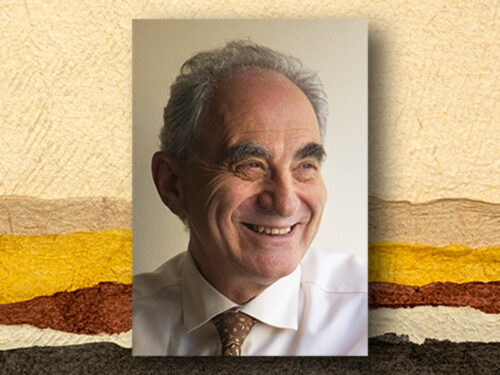
Date: November 28, 2023
Time: 4:30 pm - 5:30 p.m.
Location: Robertson Hall, Bowl 016
Carbon Dioxide Removal to Solve the Climate Crisis
Eli Yablonovitch
Professor of Electrical Engineering and Computer Sciences at the University of California, Berkeley, and Director Emeritus of the NSF Center for Energy Efficient Electronics Science at Berkeley
ABSTRACT
This talk presents a carbon-negative solution to the world’s CO2 emissions by stably sequestering carbon that has been photosynthetically fixed by cultivated plants. The technology buries salted biomass in a dry environment within an engineered biolandfill. The key to stable sequestration is the recognition that a dry environment assisted by salt preserves biomass. Preservation by salt has actually been known since Biblical times. Salt effectively reduces the relative humidity of the sequestered biomass, preventing decomposition for thousands of years. Current agricultural and biolandfill costs indicate US$60/tonne of sequestered CO2, corresponding to ~US$0.53 per gallon of gasoline. A significant fraction of world emissions can be sequestered.
BIO
Yablonovitch introduced the idea that strained semiconductor lasers could have superior performance due to reduced valence band (hole) effective mass. With almost every human interaction with the internet, optical telecommunication occurs by strained semiconductor lasers. He is regarded as a Father of the Photonic BandGap concept, and he coined the term “Photonic Crystal”. The geometrical structure of the first experimentally realized Photonic bandgap, is sometimes called “Yablonovite”. In his photovoltaic research, Yablonovitch introduced the 4(n squared) (“Yablonovitch Limit”) light-trapping factor that is in worldwide use, for almost all commercial solar panels. He was elected to NAE, NAS, NAI, AmAcArSci, and as Foreign Member, UK Royal Society.
Open to the public
Co-sponsored by the Andlinger Center for Energy and the Environment, the Center for Policy Research in Energy and the Environment (C-PREE), the Department of Geosciences, and the High Meadows Environmental Institute